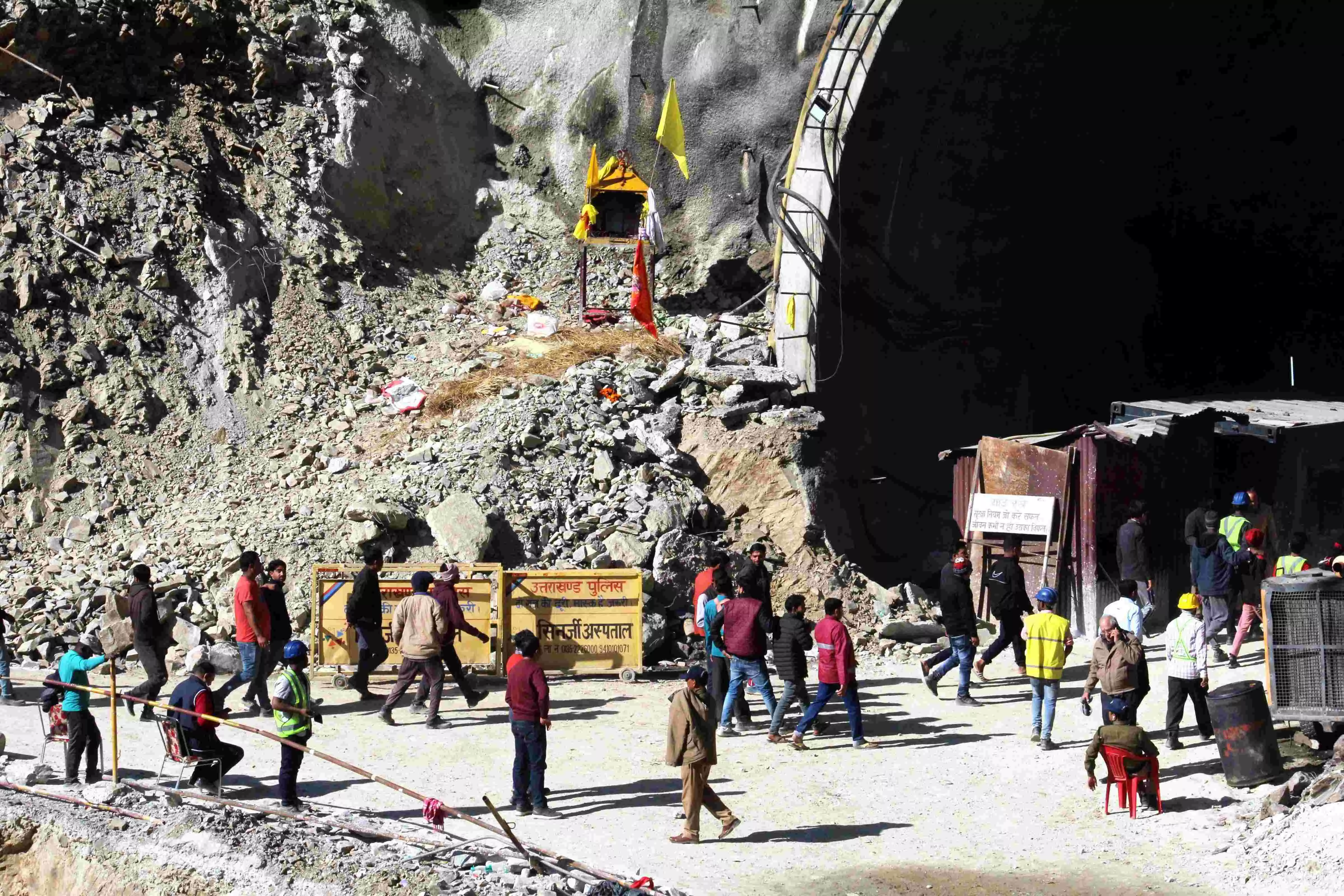Relieving triumph

In the heart of the Himalayas, where the air is thin and the mountains tower with both beauty and danger, a tale of resilience and unity unfolded as 41 migrant workers were rescued from the debris of a collapsed tunnel in Uttarkashi. The 17-day-long rescue operation, involving hundreds of government personnel and additional private-sector rescue teams, can only be described as a spectacle of human determination and cooperation. The success of the rescue mission not only marked the end of a harrowing ordeal for the trapped individuals but also highlighted the unwavering commitment of those involved in the operation. From the police department to health services, from the Indo Tibetan Border Police to the National Disaster Response Force, and many more – the combined efforts showcased a massive operation that went beyond professional duty. The patience and perseverance exhibited by the trapped workers were equally commendable, standing as a testament to the human spirit in the face of adversity. The Indian Prime Minister, acknowledging the collective spirit, rightly praised everyone associated with the rescue operation. In a statement, he emphasised the families' patience and courage, acknowledging their crucial role during these challenging times. Such recognition not only honours the individuals directly involved but also serves as a powerful reminder of the human cost and sacrifice behind every successful rescue mission. The numbers behind the operation are outright staggering – 652 government personnel, including representatives from various departments such as police, health, disaster response forces, and more. When factoring in voluntary and private-sector contributions, the total number of people involved likely exceeds 1,000. Even officials from the highest offices, including the Prime Minister's Office, participated, underscoring the seriousness with which the matter was approached. While celebrating this triumph, we must recognise that the job is far from over for the state and central governments. The immediate challenge lies in ensuring that the rescued individuals do not suffer from long-term trauma, both mentally and physically. Medical experts are already noting concerns about post-traumatic stress disorder (PTSD) in addition to exhaustion, dehydration, nutritional deficiencies, and potential infections. Vigilant medical observation and support are imperative in the days ahead. However, beyond the immediate aftermath, a more profound question arises concerning the safety and viability of the government's flagship Char Dham project, under which the collapsed tunnel was being constructed. Experts raise concerns about exacerbating fragile conditions in the upper Himalayas, where towns are built atop landslide debris. The delicate balance between development and ecological preservation demands a thorough scientific assessment to navigate the complexities and pitfalls. Another pressing concern brought to the forefront by this incident is the overall living and working conditions of migrant workers across the country. Often operating on the fringes of society, these individuals face numerous adversities, largely hidden from the public eye. In the present case, the 41 rescued workers hailed from eight states, emphasising the widespread nature of this issue. It is crucial to establish equitable living and working standards for this self-made community, emphasising their safety and well-being. The migrant workers' safety, not just in Uttarkashi but across India, should be a priority. This incident also serves as a stark reminder to reevaluate the ongoing debate between ecology and development. It is time to reconsider the current trajectory where developmental concerns often overshadow ecological considerations. A harmonious balance is essential for sustainable progress, ensuring that development serves as a force for good without compromising the delicate ecosystems that define the nation's diverse landscapes. To sum up, the Uttarkashi tunnel rescue stands not just as a successful mission but as a reflection of the collective strength, resilience, and unity that defines us as a society. As we applaud the efforts of the government personnel and private-sector individuals involved, let us also use this moment to introspect and chart a course toward a future where development and ecological concerns coexist for the well-being of both our people and our planet.



